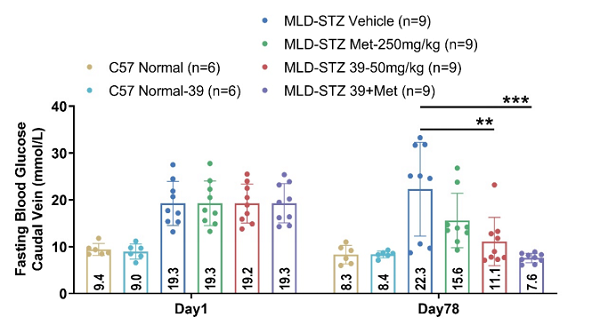
According to a research published in Signal Transduction and Targeted Therapy, a team led by Prof. LIU Qingsong from Hefei Institutes of Physical Science, Chinese Academy of Sciences reported a promising approach in the treatment of diabetes by developing a novel dual regulatory molecule, IHMT-MST1-39, which affects both MST1 and AMPK, two proteins related to diabetes.
Diabetes is a chronic condition that affects millions of people worldwide. It occurs when the body is unable to produce or use insulin properly, leading to high levels of glucose in the blood. The death of insulin-producing pancreatic beta cells is a key factor in the development of type I diabetes, while type II diabetes is characterized by metabolic disorders.
The researchers focused on two key proteins: MST1 and AMPK. They proposed that inhibiting MST1 kinase, which plays a role in apoptosis of pancreatic β-cells as well as insulin secretion, while activating AMPK, which helps coordinate the cellular response to energy stress, might be an effective strategy for diabetes treatment.
Using a rational drug design strategy, the team developed IHMT-MST1-39, a potent and selective MST1 kinase inhibitor. In laboratory tests, the compound was shown to improve the survival and function of pancreatic β-cells, and in vivo studies revealed it was effective at reducing fasting blood glucose, food and water intake, and lowering glycosylated hemoglobin levels.
When combined with metformin, the first-line clinical drug for diabetes, the glucose-lowering effect was even more significant. Further research showed that IHMT-MST1-39 combined with metformin also significantly enhanced AMPK activity in the liver, leading to improved glucose tolerance and insulin resistance.
This study provides new insights into the potential role of simultaneous modulation of MST1 and AMPK activities in the treatment of diabetes.

IHMT-MST1-39's Effect on Fasting Blood Glucose Levels in Type I Diabetic Mouse Models (Image by WANG Junjie)